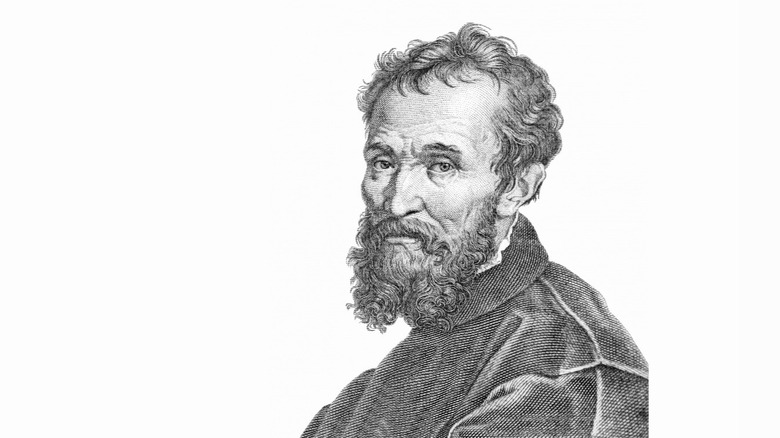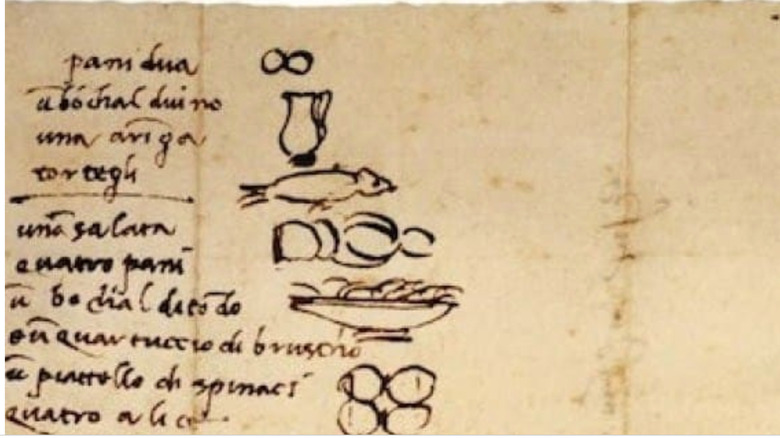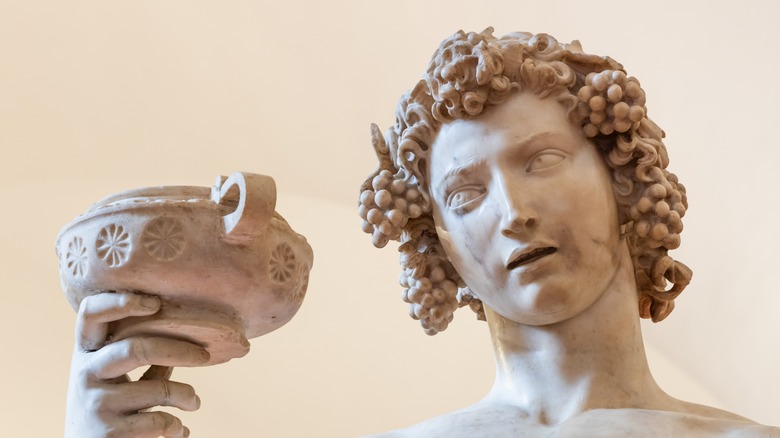The Foods On Michelangelo's Illustrated Grocery List
Thousands flock to the Sistine Chapel in Vatican City every day to stare at the grandeur and magnitude of work so great, they're known worldwide. Five million sightseeing art and history enthusiasts (per Roman Experience) are stunned into silence by the colors, the mastery, and the vivid detail of each painting, sculpture, and tilework in the gallery.
It's that attention to exquisite details that also turns admirers' heads down to a seemingly insignificant, small, and barely legible scrap of paper — Michelangelo's grocery list. The list, handwritten notes, and other works of art by Michelangelo are displayed at the Florence museum Casa Buonarroti. This grocery list was also featured in an art exhibit at the Seattle Art Museum, according to Hyperallergic.
This small token of the past gives us a glimpse into the everyday life of 15th- and 16th-century civilians. Beside each item on Michelangelo's list is a small caricature drawn by his hand. It's believed that Michelangelo often illustrated his grocery lists because his servant was illiterate, according to Oregonian. But what does the food on his list tell us about his life and the lives of 16th-century Italians and why do we find it so inspiring?
Michelangelo ate like a noble
Michelangelo's grocery list requests a herring, tortelli, two fennel soups, four anchovies, and a small quarter of a rough wine, explains Open Culture, with corresponding images sketched beside each item. Fish, bread, and wine may not seem like a diet of inspiration but Atlas Obscura points out that this list actually tells us much more about life during that time. On the backside of the list is a letter dated March 18, 1518, which reveals that it was written around Lent, a time when people were supposed to forgo meat and fish, and vegetables were eaten instead.
While Michelangelo was eating the virtous vegetables required of him, The Oxford Guide to Italian Food states that this was still a meal fit for nobles, whom Michelangelo was used to dining with. At the time, Michelangelo (who considered himself frugal) had risen to fame because of his acclaimed sculptures "The Pietà" and "David," explain Random Times. Experts also say that this list was intended to be enough for three separate meals, which explains why bread is listed multiple times but in different amounts. Two simple circles are drawn beside "pani dua" representing bread rolls, and further down the list, there are six circles drawn ie six loaves (via Grand Voyage Italy).
Fish and vegetables were eaten during Lent
The drawings express either his kindness to his servant's illiteracy or Michelangelo's talent and commitment to design even for simple tasks like grocery lists. The Oxford Guide to Italian Food explains that the drawings even use appropriate serving ware — the salad is drawn in a wide shallow dish and the fennel in round-rimmed bowls. There is a question as to why there is not a drawing for tortelli. Perhaps the servant's wife would make it fresh, suggests Grand Voyage Italy.
Although the list reveals some of Michelangelo's dining habits, it's unclear how he intended to combine these ingredients. Did Michelangelo intend to eat the herring with the fennel soup and two rolls? Or, perhaps the four anchovies were to be consumed with four rolls, a salad, and tortelli? Whatever the intent, this glimpse into the life of a genius is rare. Michelangelo had most of his sketches burned, according to the New York Times and only 600 still exist. Our understanding is minimal, but this list conjures images of our own meal planning, a frantic scrawl of a last-minute grocery list, and the age-old desire for comfort and balance in sustenance.


